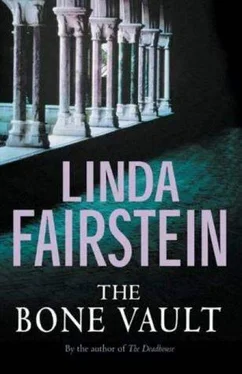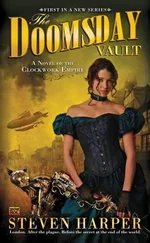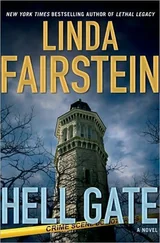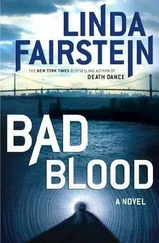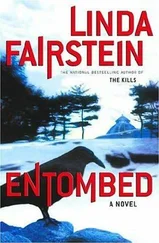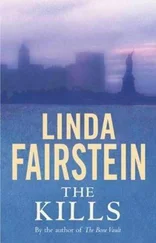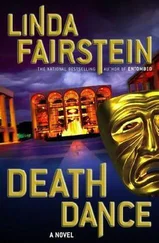I turned off my cell phone as we walked up the Central Park West entrance to the American Museum of Natural History. “No. That was Ms. Drexler. Thibodaux took the shuttle to Washington this morning for a speech he’s giving this evening. We can meet with him after the weekend. He’ll be at his desk on Monday. She assures me he has several weeks to clean up his affairs at the museum.”
“Let’s hope he can mop this one up for us. What the hell is Katrina Grooten doing in his dead wife’s sweater?”
The guard at the front door had been told to expect us. He asked me to sign the log before directing us to Elijah Mamdouba’s office on the fourth floor of the south wing.
This time, entering from the opposite side of the structure, we retraced our steps through the massive hallways of ground-floor exhibits. It looked to me, as we traipsed past the dioramas of North American mammals, that today they were being prepared for medical procedures. Some kind of restoration, no doubt, which must be a constant need in an institution with this vast array of collections. In front of the tableau of the Grand Canyon, two solemn mountain lions were being examined by a pair of young scientists, who were dressed in lab coats with small white surgical masks covering their mouths and noses.
Arrows pointed us to the public elevators. “Skip it,” Mike said, tugging at my sleeve as I stood behind a rowdy group of eight-yearolds. “Check out the stairs.”
Whenever possible, Mike opted for the unmechanical route through a building. It was a logical way to get to see more of a scene, often including parts of a location that weren’t meant to be observed by outsiders.
Like everything else in the old buildings, the staircases were enormous-easier to fly down than to climb up. Because the height of the rooms was so grand-high enough to house a dinosaur skeleton or whale model-there were four flights of steps between each floor.
When we reached the second landing, Mike stopped to crack open the door that led into the corridor. He closed it behind him and started back for the staircase. “Birds.”
We loped up to three, and I paused to catch my breath while he opened the door to look. “African mammals. Monkeys and apes everywhere.” He tried another door that stood directly opposite the entrance to the exhibits, but it wouldn’t give. “Remind me to ask. I want to know what’s behind every locked door.”
“Good luck. There must be several thousand of them in this place.”
I was relieved to get to the fourth level and leaned on the banister to catch my breath.
“Wait here.” I was happy to rest while Mike went on up to the fifth level, past the signs that announcedNO PUBLIC ACCESS. He pushed open the pair of double doors and was gone for several minutes.
“What did you find?”
“The longest hallway I’ve ever seen in my life. Offices and cubbyholes everywhere. And lockers. Floor to ceiling, as far as you can see. Gray metal lockers, like a storage facility, that stretch from one end of the building to the other. C’mon. Let’s go see how many ways there are to stuff a monkey.”
More arrows on four led us around corners, past the Dinostore, the cafe, and the extinct mammals to a receptionist who worked for Mr. Mamdouba. She pointed us to his open door just as he must have heard our voices and walked out to welcome us.
“Mamdouba here. Elijah Mamdouba.” The slight black man who stood before us was barely five feet five inches tall, but had a powerful voice and handshake to match. “Miss Cooper? Mr. Chapman? Won’t you come in?”
I followed him into the room, a perfectly circular space that occupied a corner turret, looking out on the intersection of Seventy-seventh Street and Columbus Avenue. I couldn’t recall ever being in a round office before, and the delightful whimsy of the shape was enhanced by the assortment of treasures that sat on his desk and bookshelves. Not sterling tea services and Old Masters, as we’d seen at the Met, but priceless pieces of cultural history from all over the world. Four identical doors were set back into the walls, two behind his desk and two across the room, all covered with decorative exhibition posters.
Mamdouba grinned as he watched me take in his surroundings. “I’m sure you are both quite familiar with our museum, am I right?”
We talked for several minutes while I wandered around the room, examining specimens, skeletons, and photographs of Mamdouba that had been taken in deserts and jungles all over the world. The gentle lilt of his African accent belied the credentials that were hung on his wall among the pictures. There were undergraduate and graduate degrees from Cambridge University and a Ph.D. from Harvard in cultural anthropology.
“But I’m sure you’re not here to listen to me go on about the latest species of fish we’ve just discovered.” All trace of the smile disappeared. “You want to talk about Miss Grooten.”
“Yes, we’ve got quite a lot of questions. About her, and about the exhibition she was working on while she spent time here.”
“Anything we can help you with. I liked Katrina a great deal.”
“You knew her personally?”
“Not terribly well, Miss Cooper. She was quite junior, of course, so the other members of the bestiary exhibition team often used her as a gofer, I think you call it. She ferried information back and forth between their quarters downstairs and my office. We shared some professional interests, too, not least of which was our love of Africa.”
“Are you from South Africa, too?”
“No, Mr. Chapman. Ghana. Born there in fifty-two, when it was still the Gold Coast. But my travels have taken me all over the world.”
“Did you meet Katrina here, at the museum?”
“Yes. I’m supervising our involvement in the big joint show. I saw her here often.”
“Why did you take notice of her? I mean, she wasn’t one of the most important scholars or contributors to the project.”
“Actually, it was she who asked formy attention at the time. She was working at the Cloisters, as you know. But by the end of the summer, she was interested in going back home. She wanted a job at an institution there, and she was thinking of changing her entire field of concentration. Katrina’s background was in medieval art history. She’d become interested in anthropology along the way, and came to me for guidance.”
“Why the change in focus?”
“Perhaps her friends can tell you that, Miss Cooper. I don’t know which came first-her desire to go home, and a realization about the shortage of European art collections in Africa, or the subject matter itself. Once she was exposed to the extraordinary collections we have here, I assume she became more interested in them.”
“Did you socialize with her? Outside the museum?”
“No, no. I can’t think that we were ever anywhere together except right in this building.”
“Did you know anything about her personal life, her problems?”
He reflected for a minute before answering. “Not really. She told me, in the fall, that she’d been ill. Nothing she wanted to discuss with me. She apologized from time to time, at meetings, for being distracted when I called on her to answer questions. She didn’t look terribly healthy, but then, have a glance around at some of these young scientists. Not the heartiest-looking lot. We don’t pay them enough to eat very well, and then they spend all their time in these windowless laboratories, with fluids and preservatives that would give a funeral home a bit of competition. Can’t say as I thought she looked worse than many others.”
Mamdouba smiled and then said, as an afterthought, “Besides, most of them look awfully pale to me.”
Mike leaned forward, his notepad resting on his left knee, his pen in his right hand, with which he was gesturing. “So exactly what is it you do around here?”
Читать дальше
